Easily backup your files from a Mac computer to Koofr
To backup or not to backup is not a question anymore. The real question is how to backup your data regularly. With a backup software Duplicati and WebDAV protocol, you can easily set up an automatic backup from your Mac to Koofr. Follow the steps and never worry about losing your files again.
Written by human for humans
[Updated, May 2020: Added video instructions for creating backups to Koofr with Duplicati]
[Updated, Oct 2023: New screenshots added].
We have previously talked about backing up computers running Ubuntu and Windows. But if you are a macOS user and you want to automatically back up your files to Koofr, today is your day. The best way to create a backup is to store it in a different physical location, and Koofr is an ideal solution for that.
So, what do I need to create a backup on macOS?
-
A macOS computer
-
Some files to backup. It may be your precious holiday photos, a draft of your next best-selling novel or important documents of your small business.
-
Backup software. We will use Duplicati, which is a free, open-source backup solution with many features.
- A free Koofr account.
Read on, or watch our video instructions How to backup your files to Koofr with Duplicati.
(1) Let's prepare
First, get your free Koofr account if you do not have one yet. You will need it later. Then, download the correct installer from the Duplicati webpage. To do that, click on Download Duplicati 2.0 for your operating system, select the latest release and find a .dmg file under Assets. Download the .dmg file to your computer and install it. Open and drag Duplicati into Applications.
You’ll get a warning because Duplicati was not downloaded from the official App Store. Click on Open to confirm you are OK with opening it anyway.
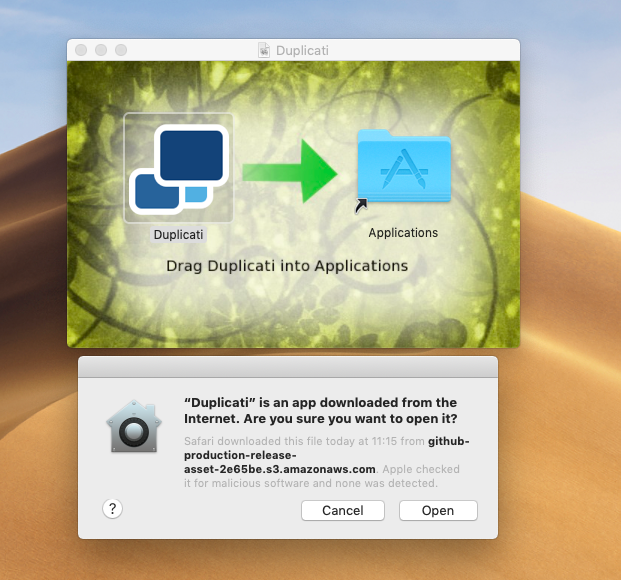
When this part of the process is done, you can set up the backup. To do that, follow the steps below.
(2) Setup the backup
Now that we checked off all the prerequisites, it is time to set up the backup. Run Duplicati – you can find it in Finder under Applications - and it will open in your preferred browser.
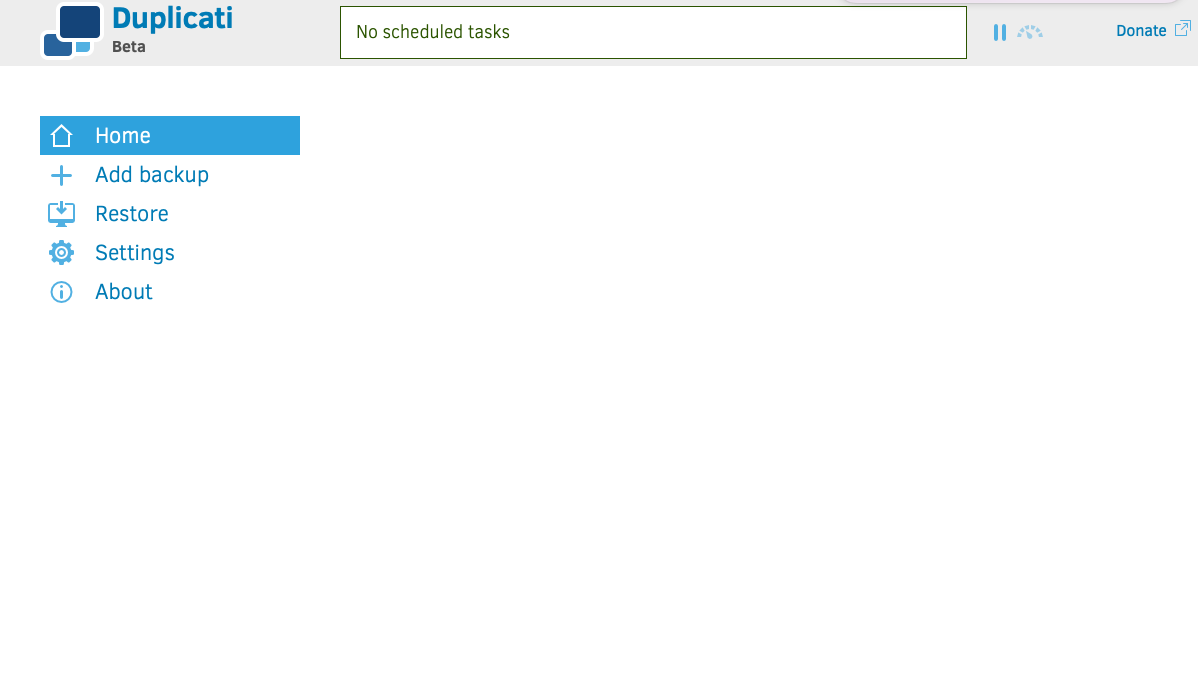
Select Add Backup, then check Configure new backup, and finally click Next.
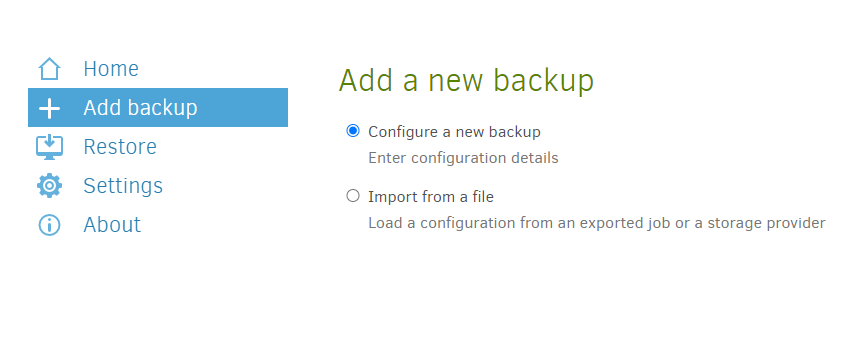
Select a name for your backup, select the encryption type and set the passphrase. You are free to choose any name for your backup that suits you; we will use My Backup here. Once you have named the backup, move on to the encryption type. We suggest you leave the encryption on AES-256 encryption, built-in.
Once you set your passphrase, your data will be encrypted before being sent to the backup destination, ensuring that you and only you can read this data. Choose a strong passphrase and make sure you store it in a safe place (like in your password manager)! Keep in mind that there's no way to restore your backup if you forget your passphrase. Continue by clicking Next.
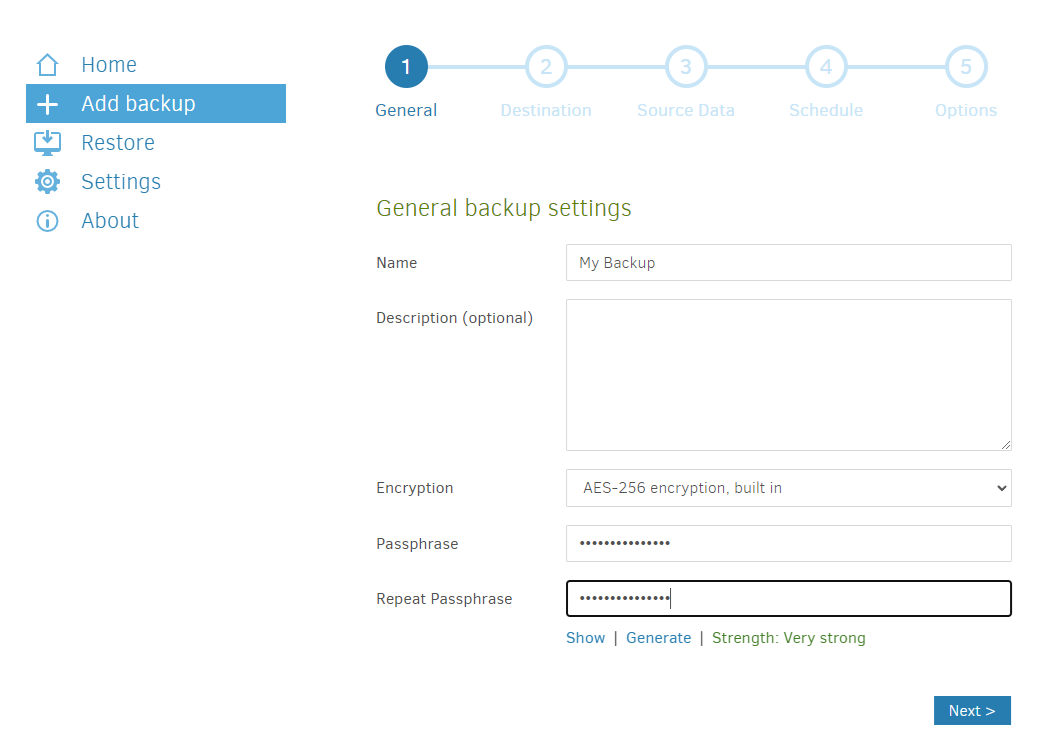
Now you need to choose where to store your backup. Since Koofr provides a WebDAV interface, select WebDAV option from the drop-down list.
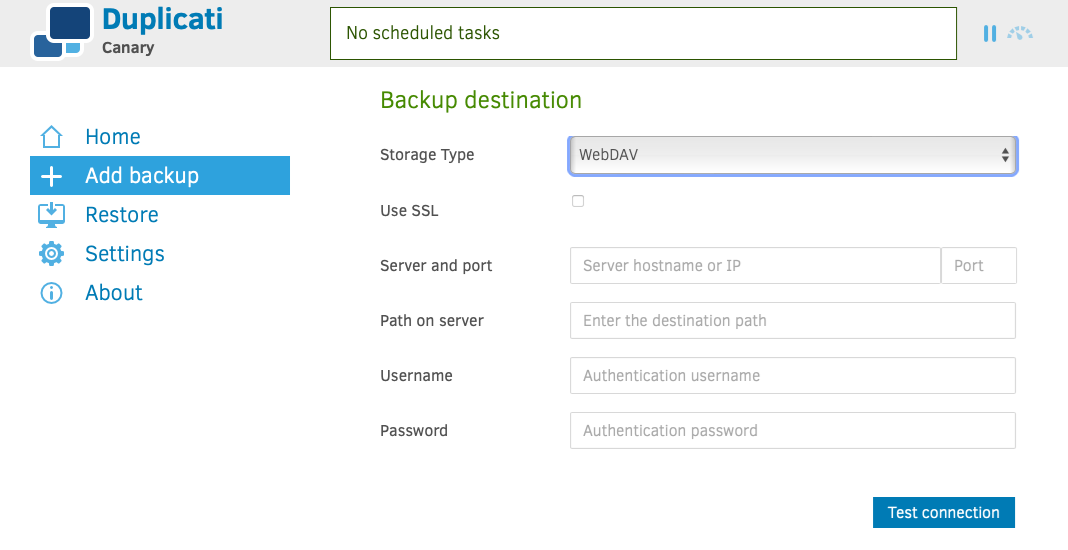
In the next step, check the SSL box. You need to enter app.koofr.net in the Server and port field and for Path on server enter dav/Koofr/My Backup. The path must start with dav/Koofr/ and the last part My backup is the name of the folder where the backup will be stored. You can choose any folder, but we decided to use the same name as we used for the backup name in the first step.
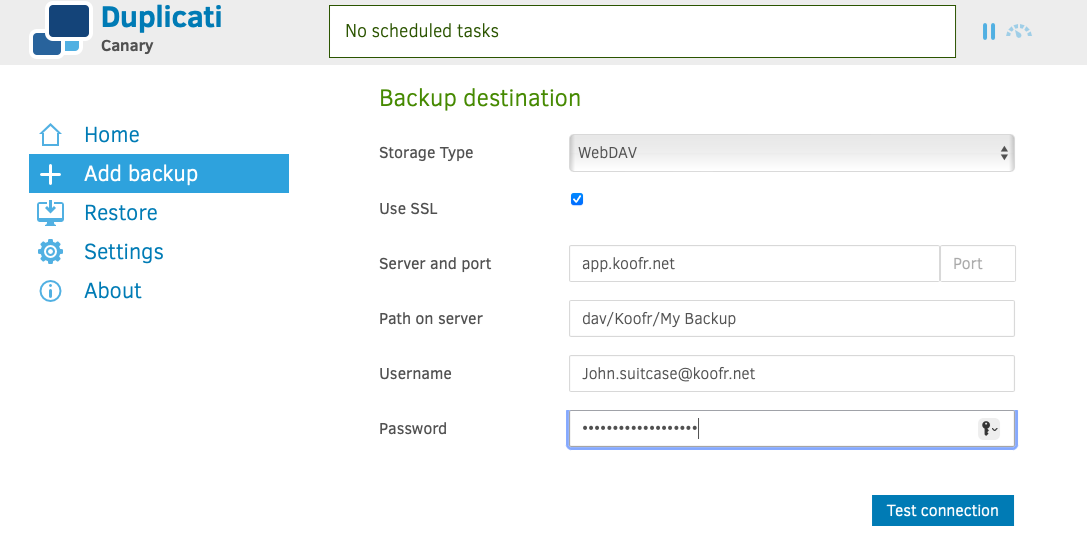
As far as passwords go - we strongly suggest that you generate a separate password just to use it with the Duplicati backup. Our video tutorial How to generate application-specific passwords for WebDAV connections in Koofr can help you do that.
So, in Username and Password fields enter your Koofr username and the password that you generated through the Koofr password generator. You can do this in Koofr account settings, under Preferences in the Password tab.

Once you've entered your username and password, click Test connection. A new window will pop up, ask you want to create a new folder. Click yes.If you've done everything right, you should see a notification like the one below. If not, check the steps above again and make sure you have entered the correct credentials.
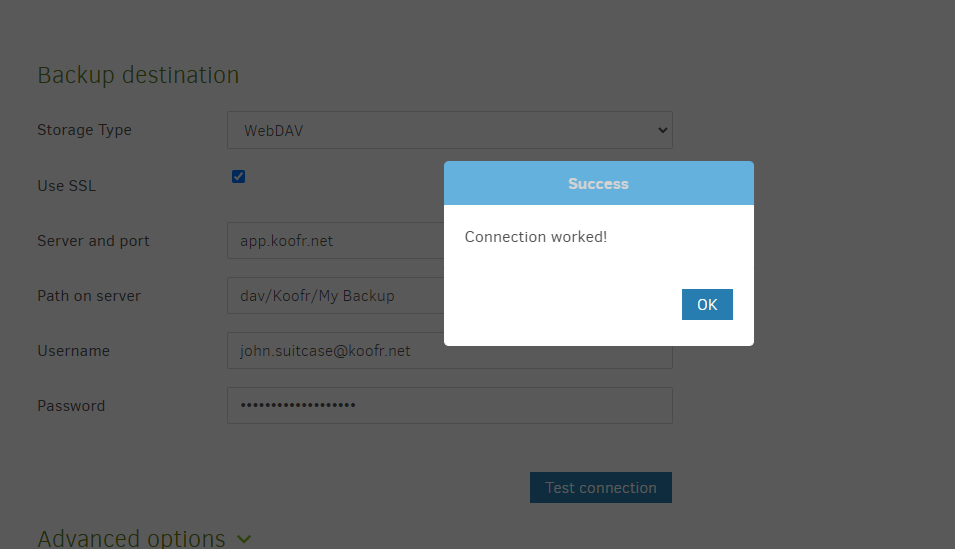
After you've tested the connection, click Next. In this step, you'll have to choose the source of files you want to back up.

Once you are sure that you checked all locations you want to backup, proceed to next step – Scheduling. Choose your preferred time for backups – we advise you back up at a time when the computer is less likely to be heavily used and to make backups regularly, at least once a week if not daily.
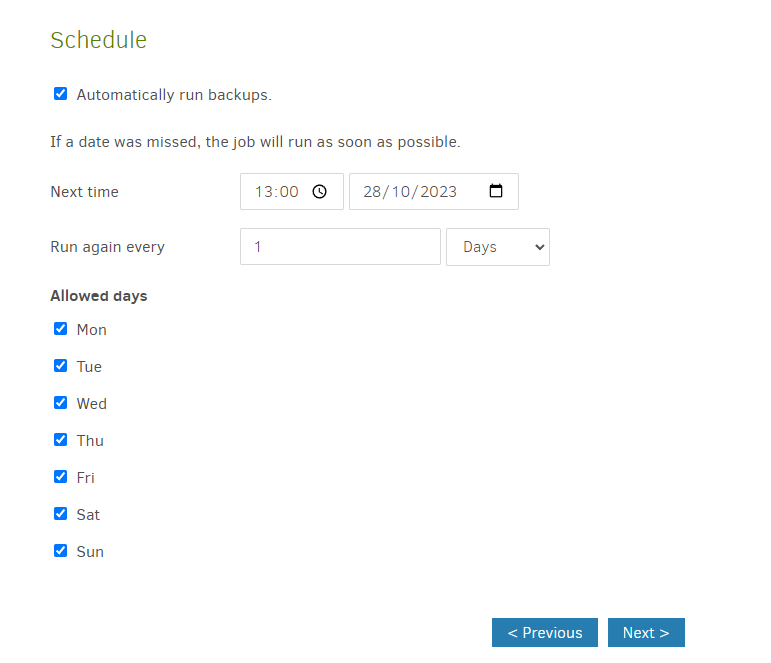
Click next, and you will land among some more settings - General options. As Duplicati uploads the backups in chunks, the upload volume size determines the size of a single uploaded chunk. The default of 50MB suits most home user connections, but you might want to lower this to a few MB if you are on a slow internet connection.
The last option determines how many backups will be kept on Koofr - the more backups you keep, the further back in time you will be able to go when you want to restore. However, the more backups you keep, the more space on Koofr will be used. Keeping two weeks worth of daily backups or three months worth of weekly backups seems a good choice for a home user.

In the last screen, you are presented with a summary of the configuration if you click on the arrow next to the name of your backup, but the only important thing to do is to Run the backup now.
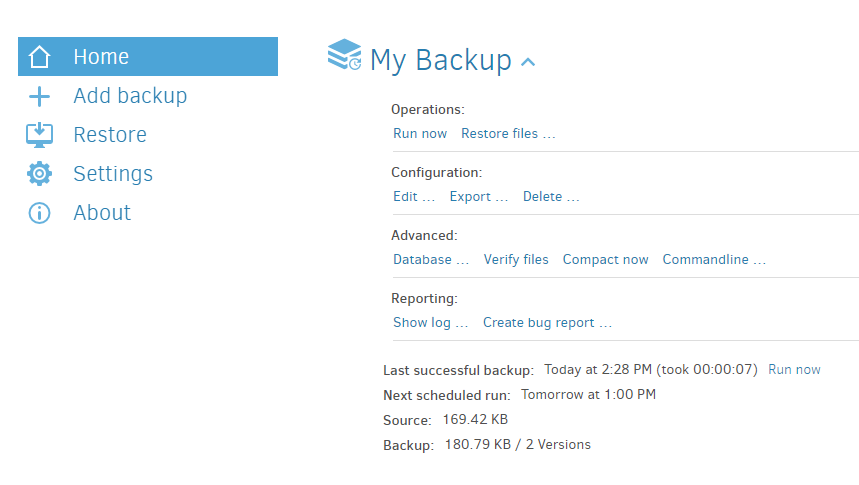
You can see the status of the backups in the Duplicati application in your browser. If you check the details, you can also see possible warnings and errors under Reporting of a specific backup.
And this is it, we're done!
Want to talk to us? Join us on the Koofr subreddit!


